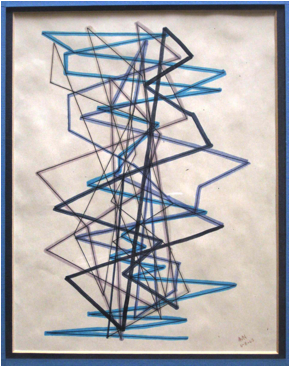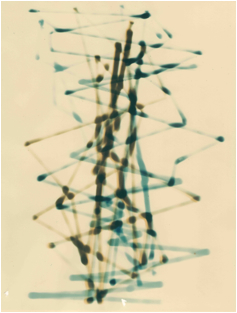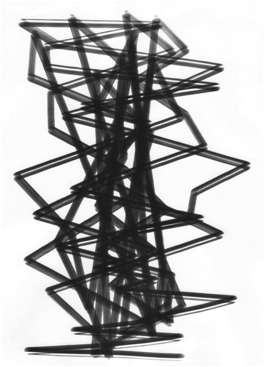by A. Michael Noll
A. Michael Noll is one of the earliest pioneers to use a digital computer to create patterns and animations solely for their artistic and aesthetic value. His first computer art was created at Bell Labs in Murray Hill, New Jersey during the Summer of 1962. Four examples of his work are shown below.
Movie prints (16 mm) of his computer-generated animations are in the permanent collections of the Museum of Modern Art (New York City) and the Academy of Motion Picture Arts and Sciences (Los Angeles). His computer-generated ballet is also in the permanent collection of the Dance Library at Lincoln Center (New York City). Large prints of “Gaussian-Quadratic” and “Computer Composition With Lines” are in the permanent collections of the Los Angeles County Museum of Art and the Fisher Gallery at the University of Southern California.
These works are copyrighted by A. Michael Noll and should not be reproduced in any form or manner without his permission.
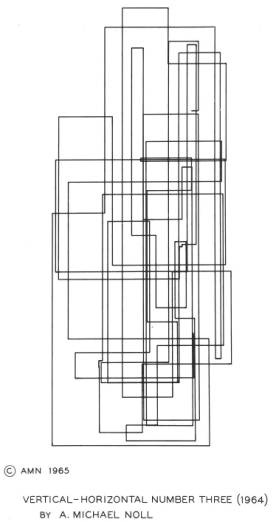
“Vertical-Horizontal No. 3” 1962 The position of the end points of the lines was chosen at random with a uniform probability density. One of the coordinates was then changed alternately to create horizontal and vertical lines.
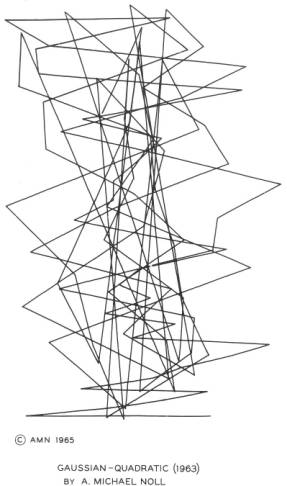
“Gaussian Quadratic” 1962 Ninety-nine lines connect 100 points whose horizontal coordinates are Gaussian. Vertical coordinates increase according to a quadratic equation. As a point reaches the top, it is reflected to the bottom to continue its rise. The exact proportions of this pattern were chosen from many other examples. This particular proportion is vaguely similar to the painting “Ma Jolie” by Picasso.
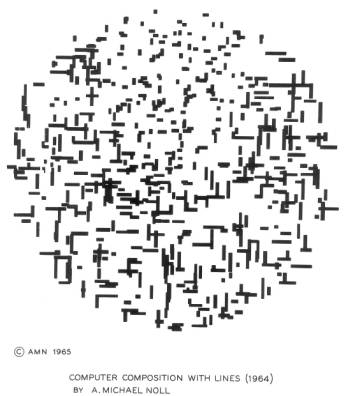
“Computer Composition With Lines” 1964 This work closely mimics the painting “Composition With Lines” by Piet Mondrian. When reproductions of both works were shown to 100 people, the majority preferred the computer version and believed it was done by Mondrian. This early investigation of the aesthetics of computer art has become a classic and is described in the published paper by A. Michael Noll, “Human or Machine: A Subjective Comparison of Piet Mondrian's ‘Composition with Lines’ and a Computer–Generated Picture,” The Psychological Record, Vol. 16. No. 1, (January 1966), pp. 1-10.
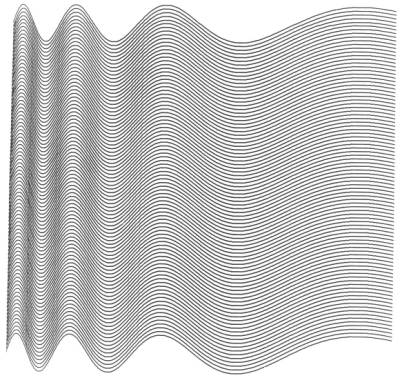
“Ninety Parallel Sinusoids With Linearly Increasing Period” early 1960s The top sinusoid was expressed mathematically and then repeated again and again. The result closely approximates the op-art painting “Current” by Bridget Riley.
